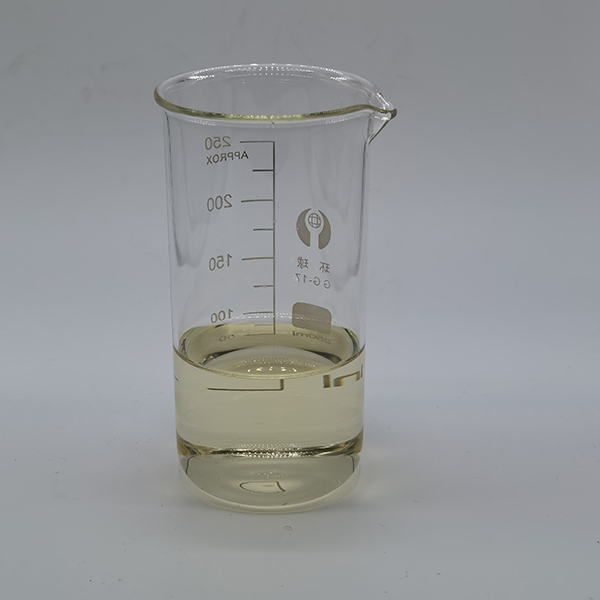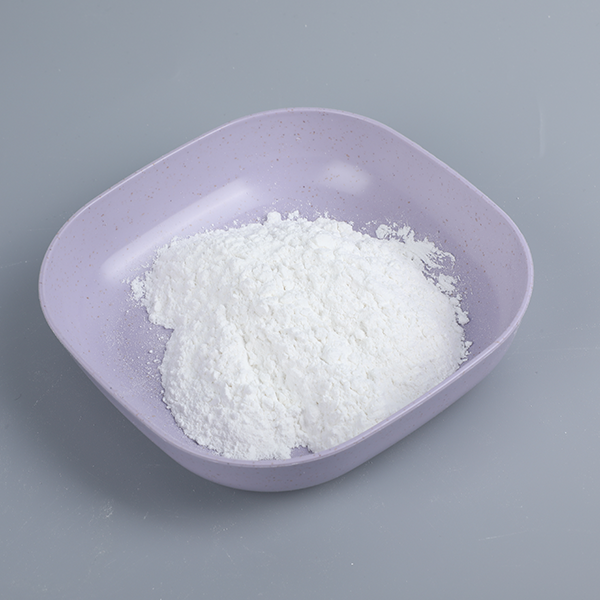Update at 12:20 p.m. Tuesday, Sept. 26.: The Town of Pittsboro released the first sampling results for 1,4-Dioxane:
The EPA has set a health advisory goal of 0.35 ppb of 1,4-Dioxane in rivers and streams and 35 ppb in drinking water. The EPA has not yet established a legally enforceable maximum level for drinking water. The 35 ppb figure is not as protective as that for rivers and streams. That’s not a scientific rationale, but a technical one: Because of the cost of upgraded treatment systems — in the tens of millions of dollars — most utilities could not achieve the more stringent goals. Dehydroacetic Acid

“The Town is cautiously optimistic with these results, which indicate whether the “slug,” or concentrated area of 1,4 dioxane, has passed us and we had minimal uptake, or it is just now reaching us,” wrote town spokesman Colby Sawyer, in a press release. Additional test results are expected tomorrow. “Once we receive these results, we can determine if our 1,4 dioxane concentration is moving in a positive or negative direction.”
Update at 7:48 a.m.: Because of the uncertainty about the presence of 1,4-Dioxane in the town’s drinking water, the Town of Pittsboro and Chatham Marketplace, 480 Hillsboro St, are offering free reverse osmosis (RO) treated water to Pittsboro water customers and customers of Aqua NC who receive their water from the Town of Pittsboro. Customers may use Code 64261 to fill jugs and bottles for free. Hours are 8 a.m. to 8 p.m. Monday through Saturday, and 10 a.m. to 6 p.m. Sundays.
Customers should bring jugs and bottles from home, as only a limited supply is available for purchase at the store.
The Town of Pittsboro has ramped up its drinking water testing after the City of Burlington discharged a slug of toxic chemical 1,4-Dioxane — 1,300 times the EPA’s health advisory goal — into the Haw River. It is the second time Burlington has reported contaminating Pittsboro’s drinking water supply this year.
In a press release issued late Friday afternoon, Pittsboro spokesman Colby Sawyer said Burlington officials had notified the town at 1:30 p.m. that routine testing showed high levels of 1,4-Dioxane — 459 parts per billion — had been discharged from one of its wastewater treatment plants on Sept. 14. However, Burlington officials reportedly told their Pittsboro counterparts that the test results had only arrived that day — more than a week later.
1,4-Dioxane is a “probable” carcinogen, according to federal health authorities. The chemical is used in industrial processing and as a solvent.
The source of the 1,4-Dioxane was likely one of Burlington’s industrial customers that discharges its wastewater into the city sewer system. Since traditional treatment methods don’t remove 1,4-Dioxane, the chemical passed through Burlington’s wastewater treatment plant and entered the Haw.
Burlington is 30 miles upstream of Pittsboro.
Sawyer said Pittsboro officials still don’t know if the 1,4-Dioxane has already passed by the town or has yet to arrive. “When a release of this type occurs, most of the substance flows downstream together,” Sawyer said. “The dilution and speed of travel of this bulked substance, or slug, is based on how fast and at what volume the river is flowing.”
Because Pittsboro’s contracted testing labs don’t operate on the weekends, its results won’t be back until Monday or Tuesday. Without the data, “we are unsure of what impact this release has, is having, or will have on our water system.”
Pittsboro utilities staff are drawing only the minimum amount of water from the Haw to “keep the water system functional,” Sawyer said.
The town is encouraging its water customers to conserve water by reducing or eliminating non-essential uses, such as landscape irrigation, washing vehicles and filling swimming pools.
In July, Burlington’s Southside wastewater treatment plant released 1,4-Dioxane into the Haw, albeit at lower levels — 160 ppb, or 457 times the EPA goal for rivers and streams. It took about a week for the chemical to reach Pittsboro, which at the time, detected levels in drinking water at 11.9 ppb.
In 2020, the Haw River Assembly, represented by the Southern Environmental Law Center, and the City of Burlington reached a memorandum of agreement to identify sources of 1,4-Dioxane and to reduce its discharge. Burlington has not publicly announced which of its industrial customers is responsible for the high levels of 1,4-Dioxane discharges.
by Lisa Sorg, NC Newsline September 23, 2023
by Lisa Sorg, NC Newsline September 23, 2023
Update at 12:20 p.m. Tuesday, Sept. 26.: The Town of Pittsboro released the first sampling results for 1,4-Dioxane:
The EPA has set a health advisory goal of 0.35 ppb of 1,4-Dioxane in rivers and streams and 35 ppb in drinking water. The EPA has not yet established a legally enforceable maximum level for drinking water. The 35 ppb figure is not as protective as that for rivers and streams. That’s not a scientific rationale, but a technical one: Because of the cost of upgraded treatment systems — in the tens of millions of dollars — most utilities could not achieve the more stringent goals.
“The Town is cautiously optimistic with these results, which indicate whether the “slug,” or concentrated area of 1,4 dioxane, has passed us and we had minimal uptake, or it is just now reaching us,” wrote town spokesman Colby Sawyer, in a press release. Additional test results are expected tomorrow. “Once we receive these results, we can determine if our 1,4 dioxane concentration is moving in a positive or negative direction.”
Update at 7:48 a.m.: Because of the uncertainty about the presence of 1,4-Dioxane in the town’s drinking water, the Town of Pittsboro and Chatham Marketplace, 480 Hillsboro St, are offering free reverse osmosis (RO) treated water to Pittsboro water customers and customers of Aqua NC who receive their water from the Town of Pittsboro. Customers may use Code 64261 to fill jugs and bottles for free. Hours are 8 a.m. to 8 p.m. Monday through Saturday, and 10 a.m. to 6 p.m. Sundays.
Customers should bring jugs and bottles from home, as only a limited supply is available for purchase at the store.
The Town of Pittsboro has ramped up its drinking water testing after the City of Burlington discharged a slug of toxic chemical 1,4-Dioxane — 1,300 times the EPA’s health advisory goal — into the Haw River. It is the second time Burlington has reported contaminating Pittsboro’s drinking water supply this year.
In a press release issued late Friday afternoon, Pittsboro spokesman Colby Sawyer said Burlington officials had notified the town at 1:30 p.m. that routine testing showed high levels of 1,4-Dioxane — 459 parts per billion — had been discharged from one of its wastewater treatment plants on Sept. 14. However, Burlington officials reportedly told their Pittsboro counterparts that the test results had only arrived that day — more than a week later.
1,4-Dioxane is a “probable” carcinogen, according to federal health authorities. The chemical is used in industrial processing and as a solvent.
The source of the 1,4-Dioxane was likely one of Burlington’s industrial customers that discharges its wastewater into the city sewer system. Since traditional treatment methods don’t remove 1,4-Dioxane, the chemical passed through Burlington’s wastewater treatment plant and entered the Haw.
Burlington is 30 miles upstream of Pittsboro.
Sawyer said Pittsboro officials still don’t know if the 1,4-Dioxane has already passed by the town or has yet to arrive. “When a release of this type occurs, most of the substance flows downstream together,” Sawyer said. “The dilution and speed of travel of this bulked substance, or slug, is based on how fast and at what volume the river is flowing.”
Because Pittsboro’s contracted testing labs don’t operate on the weekends, its results won’t be back until Monday or Tuesday. Without the data, “we are unsure of what impact this release has, is having, or will have on our water system.”
Pittsboro utilities staff are drawing only the minimum amount of water from the Haw to “keep the water system functional,” Sawyer said.
The town is encouraging its water customers to conserve water by reducing or eliminating non-essential uses, such as landscape irrigation, washing vehicles and filling swimming pools.
In July, Burlington’s Southside wastewater treatment plant released 1,4-Dioxane into the Haw, albeit at lower levels — 160 ppb, or 457 times the EPA goal for rivers and streams. It took about a week for the chemical to reach Pittsboro, which at the time, detected levels in drinking water at 11.9 ppb.
In 2020, the Haw River Assembly, represented by the Southern Environmental Law Center, and the City of Burlington reached a memorandum of agreement to identify sources of 1,4-Dioxane and to reduce its discharge. Burlington has not publicly announced which of its industrial customers is responsible for the high levels of 1,4-Dioxane discharges.
NC Newsline is part of States Newsroom, a nonprofit news network supported by grants and a coalition of donors as a 501c(3) public charity. NC Newsline maintains editorial independence. Contact Editor Rob Schofield for questions: info@ncnewsline.com. Follow NC Newsline on Facebook and Twitter.
Our stories may be republished online or in print under Creative Commons license CC BY-NC-ND 4.0. We ask that you edit only for style or to shorten, provide proper attribution and link to our web site. Please see our republishing guidelines for use of photos and graphics.
Assistant Editor and Environmental Reporter Lisa Sorg helps manage newsroom operations while covering the environment, climate change, agriculture and energy.
NC Newsline is a Raleigh-based nonpartisan, nonprofit newsroom dedicated to fearless reporting and hard-hitting commentary that shines a light on injustice, holds public officials accountable, and helps improve the quality of life throughout North Carolina.
DEIJ Policy | Ethics Policy | Privacy Policy

Science Chemistry Our stories may be republished online or in print under Creative Commons licence CC BY-NC-ND 4.0. We ask that you edit only for style or to shorten, provide proper attribution and link to our web site.